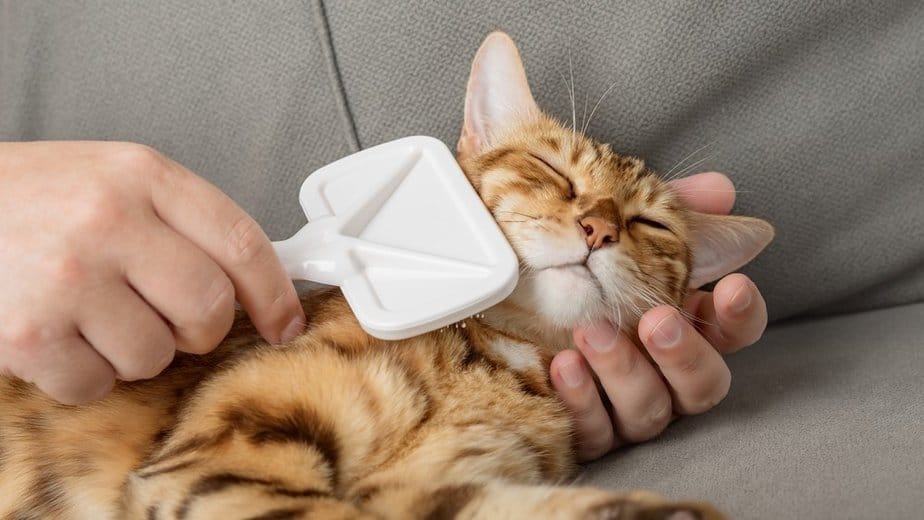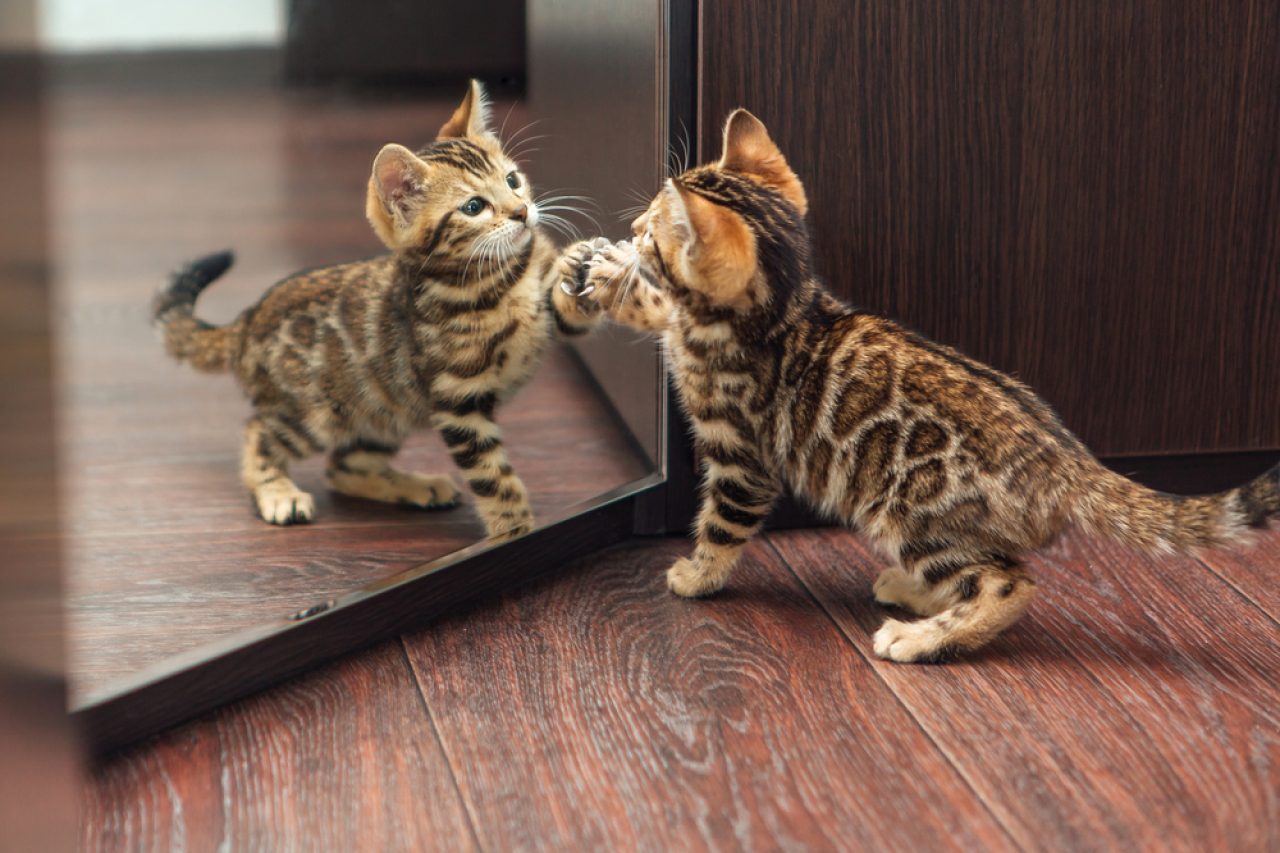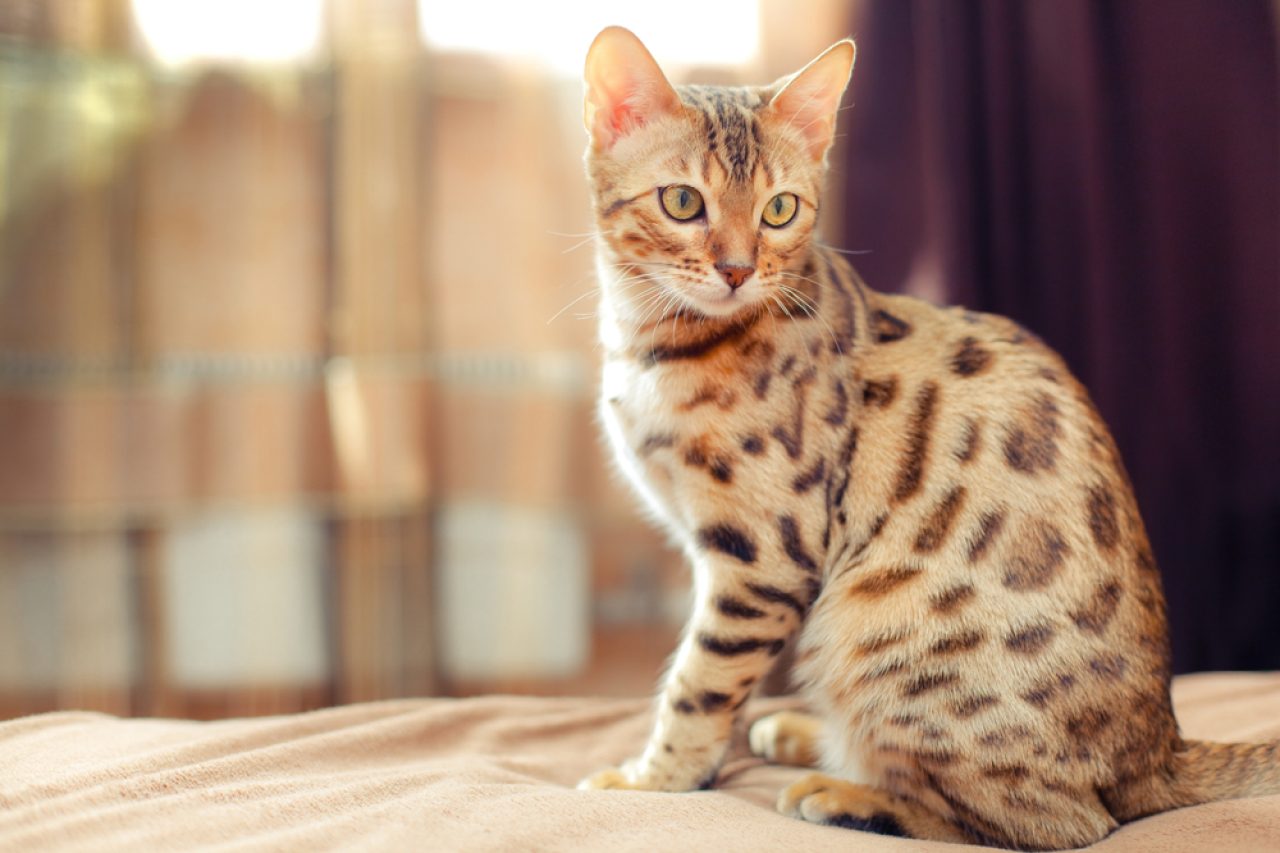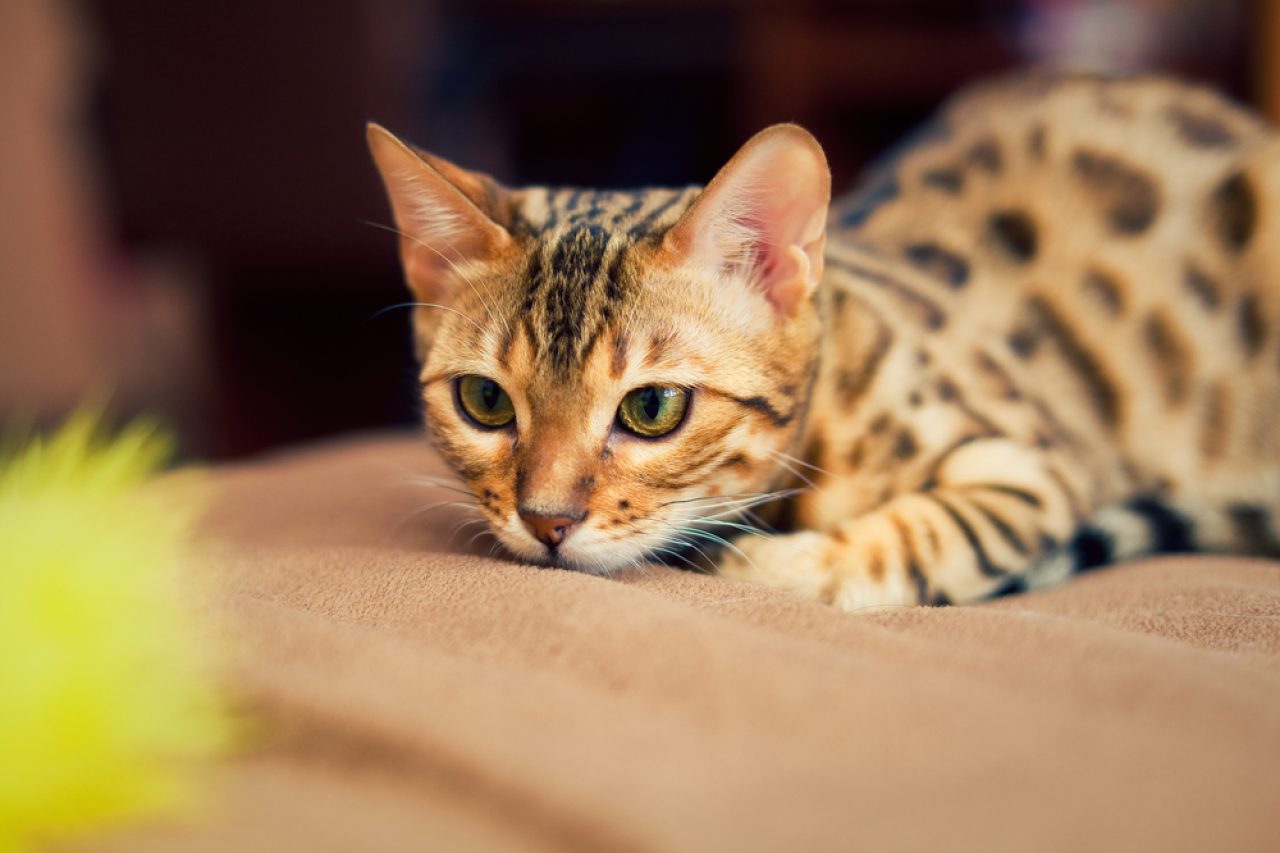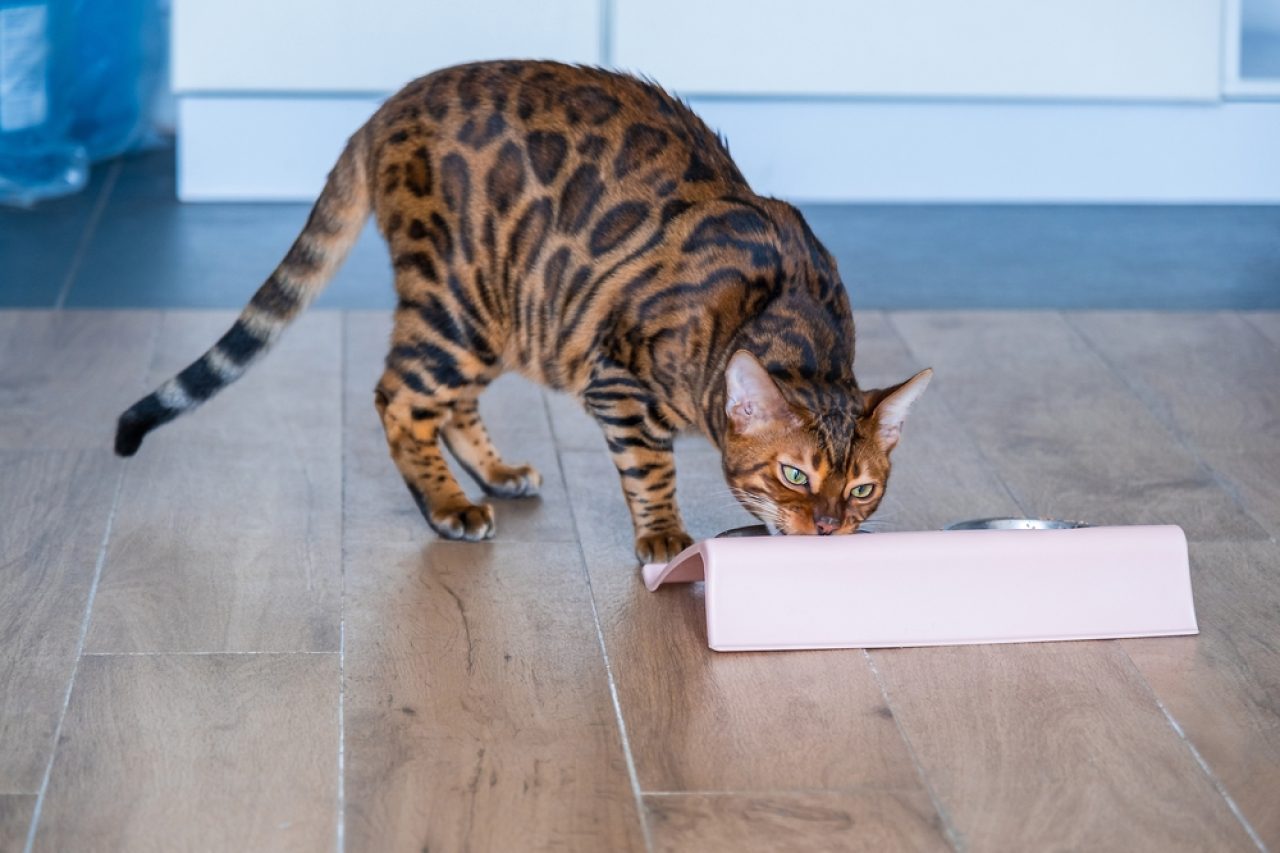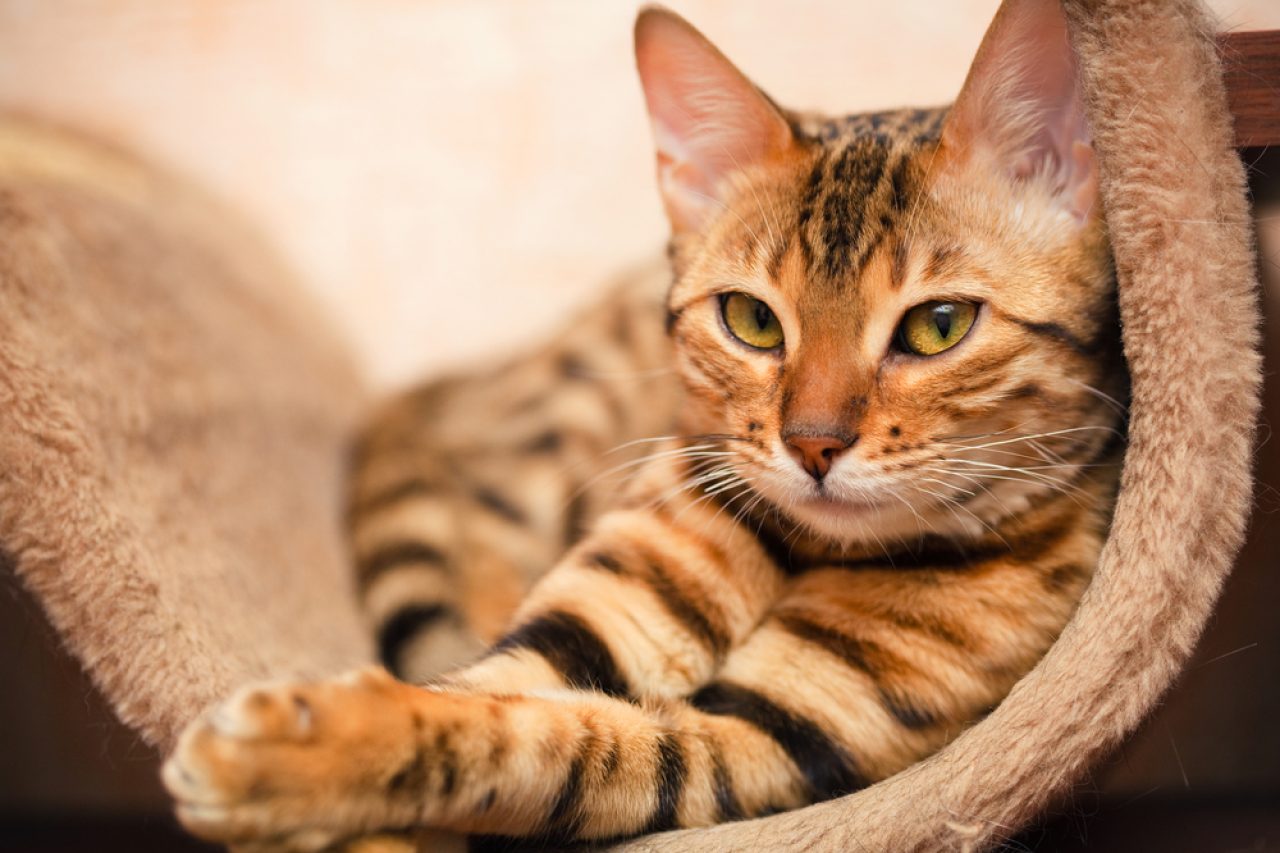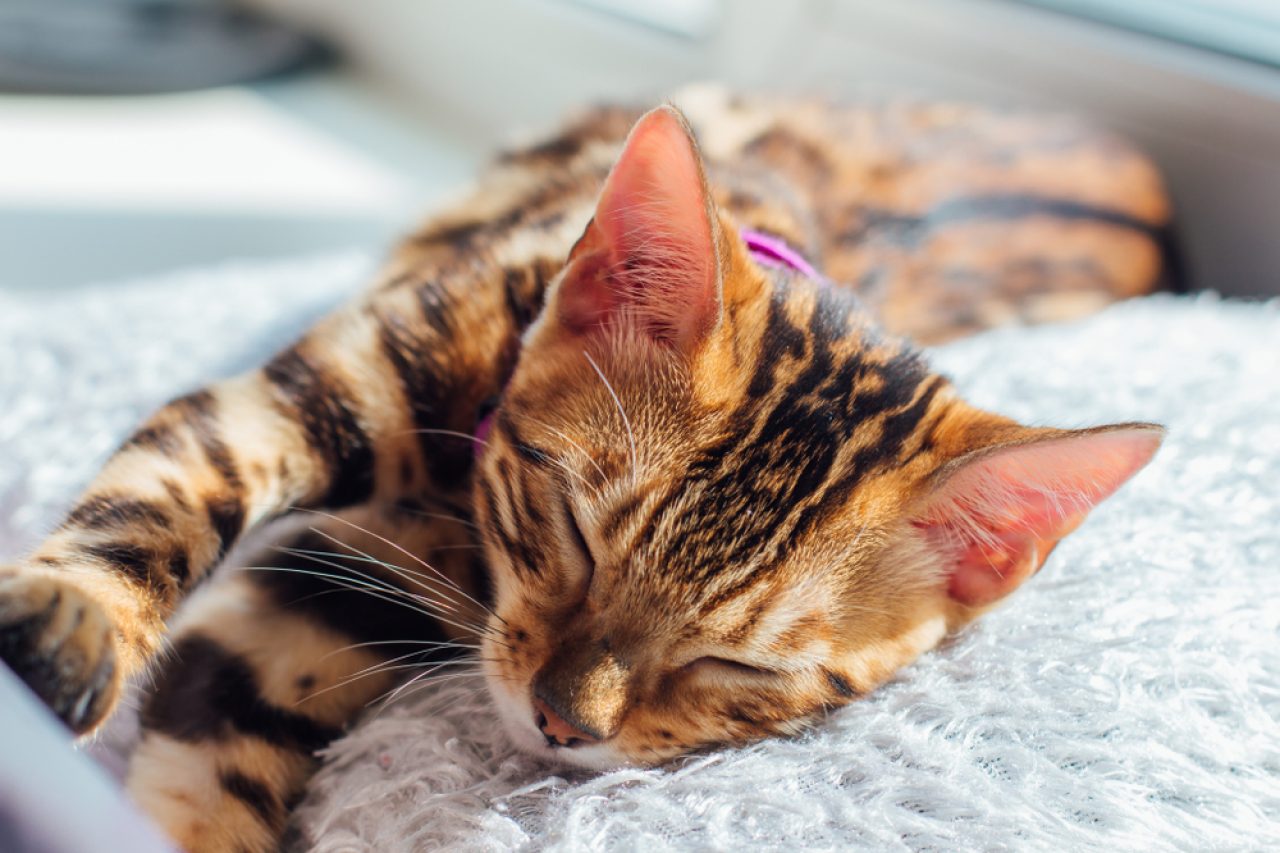📖 Table of Content:
Today you’ll be discovering the world of Bengals with me. The most common question I have these days in a pet shop is, “Do Bengal cats shed?” Some of you will confidently say “Yes” because every feline loses its fur (at least at a certain period of the year). Others will say no. So, what’s the truth?
Bengal cats are magnificent creatures that are literally demanding a lot of attention. But, their colorful fur will leave you speechless! These active furbabies will definitely light up your day and keep you entertained in those moments when you’re not really in the mood to have fun.
Also, these felines with shiny fur coats have been considered the best company for those pet owners who are allergic to cats. Some people put Bengal cats on the throne because of their non-shedding habits. It’s true that they’re way more acceptable than any other breed, but there’re some issues.
However, we’re not talking about that today. We have to figure out if you’ll need a lot of lint rollers to keep your clothes hair-free, or if you should give up black garments completely. So, what about that? Do Bengal cats shed a lot, or will you forget about cleaning cats’ hair from all over the place? Let’s find out!
Do Bengal cats shed a lot?
The shortest answer has only two letters – no. These wonderful sparkly felines don’t shed a lot, but they do lose hair from time to time. Don’t cheer a lot for allergic people, because neither domestic cat breed is completely safe for them.
However, there’s a small amount of Bengal pet owners who reported allergy problems. Because of their wild side, their bodies produce less of the protein (Fel d 1) that causes negative reactions. Their one-layered fur doesn’t shed often, making them the number one choice as a hypoallergenic cat.
Also, because their hair is short, not a lot of dirt can stick to it which means only one thing – they’re not big groomers! Your living space will mostly stay clean with a few strands of hair here and there. In case you notice that your Bengal is shedding more, keep an eye on her because something may be wrong.
Should I help my feline with grooming?
Why not? This is going to be a perfect bonding time and your Bengal baby will definitely enjoy it while you’re brushing her every couple of days. Of course, there will be some hair stuck in the comb teeth, and maybe a bit on your pants if she was lying on your lap at that very moment.
But, don’t worry. This is actually the best way to prevent her hair from touching the surfaces it shouldn’t. When she’s done playing outside, you can also clean her with wet wipes, or give her a bath. She’ll definitely enjoy both of those and you’ll reduce her shedding significantly.
I mean, Bengal cats are already one of the least shedding breeds, imagine when you help her with grooming. And on the plus side, this breed is overly affectionate, so she won’t mind some extra cuddles. Pawesome pet, right?
Why do Bengal cats shed excessively?
Shedding is a normal process when it comes to furry mammals (I mean, even human beings shed daily), and that’s also the main reason why Bengal cats shed. When it’s time to replace old damaged hair, a new one will take its place (molting).
Besides this natural process, Bengals may shed excessively on a couple of occasions. Yes, they may have some health issues, but it could also be seasonal shedding, so don’t panic just yet. In case you googled this because you suspect something’s not right with your kitty, let’s figure it out together.
1. They’re stressed
One of the reasons why your feline may be shedding excessively is because she’s stressed. Even the smallest changes can upset cats, so if you moved to a new place, or brought a new pet back home, your Bengal may shed a bit more than usual.
Some loud and sudden noises can scare her too, like thunderstorms for example. Stress and anxiety can greatly influence our felines, so don’t think that these colorful beauties are immune to that just because of their wild side.
Also, if you’re leaving her on her own for a longer period and if she feels neglected, you’ll definitely notice it. Just a tiny change in her daily routine or lack of playtime and cognitive stimulation may make her feel stressed as well.
In case you know that something like this caused your Bengal cat to shed, she’ll have bald patches on her body, mostly on her back. If your furball is stressed her hair will fall out, and in case she’s anxious she’ll groom herself excessively.
Since Bengals are not known as cats who’re grooming themselves often, it’ll be easy to spot her changed behavior. As soon as you do, try to incorporate some new, good habits and give her a lot of cuddles.
In the end, don’t hesitate to contact your vet for further advice if you feel like your effort is not giving any results.
2. They’re growing up
One of the most painful things to admit for every pet parent is that their kitty is growing up. I think it’s mostly because that happens so fast that we’re partially not aware of it. It seems like yesterday when I adopted my Nora, little fluff that I can’t imagine my life without now.
Bengal cats tend to shed excessively as they’re growing up. When they are little, their fur is fluffy and soft. It helps them to keep their little bodies warm. As they’re getting older they start growing their wonderful shiny fur.
Developmental shedding happens usually when they are around 7 to 9 months old and during this process, the texture of their fur and its color fully changes. When they reach one year to two and a half, they are considered completely mature and their fur will get its final appearance.
3. It’s time for seasonal shedding
It’s true that most breeds have a double coat, like Maine Coons or Norwegian Forest cats. They shed a lot! That’s, fortunately, not the case with Bengal cats unless you live in an area with extreme weather changes.
Fur helps your feline to regulate her body temperature, so usually, in spring most cats will lose excess hair. They won’t need a thick coat during warm summer nights, and shedding helps on those occasions. Then again, when the fall is approaching, they’ll grow new fur coats that will help them survive cold temperatures.
When it comes to Bengal cats, and other one-layered breeds, they’re not shedding as seasons change. They keep the same fur throughout the year, but they’ll still lose some of it on a daily basis. If the temperatures in your area are quickly changing, don’t be too surprised if your feline starts losing her fur.
For example, if you live somewhere in the North where temperatures can get extremely low, you’ll notice excessive shedding when the weather gets warmer. On the other hand, being close to the equator means that your feline will only have “problems” with daily shedding, which is the minimum amount possible.
4. Something’s wrong with their diet
Another possibility is that your Bengal doesn’t have a proper diet, so that’s the reason for her excessive shedding. If your feline is not getting high-quality food full of much-needed nutrition, it will be visible on her fur.
In fact, a feline’s fur is the best indicator that something’s wrong and that she doesn’t have a proper diet plan. All you have to do is do a little research and figure out which nutrients your fluffball needs. When we’re talking about Bengals, they need a lot of Omega-3 acids, but there’s more.
Of course, all cats are obligate carnivores. That means she’ll need a lot of proteins, vitamins, and minerals, as well as fat. Serving her only plant-based food and trying to turn your furbaby into vegan or vegetarian won’t do her good.
It’s true that this food is high in nutrients for you, but the problem is that her body won’t be able to absorb them. Her digestive system doesn’t have those enzymes which are able to break down plant proteins. In fact, she may develop stomach sensitivity.
So, in order for your Bengal cat to have that shiny fur that makes them stand out, and to reduce shedding to a minimum, you have to prepare high-quality food. We mentioned some of the things above, but let’s explain them a bit more.
Your feline needs a lot of Omega-3 fatty acids to keep her follicles strong. Tuna, salmon, and sardine, for example, are packed with this nutrient. In case she refuses to eat fish, you can always give her food supplements.
If you decide to use it in liquid form, you can easily put a small dose daily into her food. In case you’re one of those rare lucky Bengal owners whose cat will take them plain, pawesome! Then you don’t have to worry about it a lot.
Another very important nutrient that can help in preventing the excessive shedding of your Bengal cat’s fur is collagen. It hydrates the skin and helps maintain it healthily. When it comes to other effects that it has on your feline’s body, this nutrient will keep her bone density levels normal.
To ensure your cat consumes enough of it, serve her chicken meals, fish, beef, or pork. You can also use bone broth and add it to her dry food. Taurine, another extremely beneficial nutrient, can be found in mostly the same food as collagen.
It helps her strengthen her immune system, and it makes sure that her heart and digestion system function normally. Also, taurine ensures good vision and helps with wound healing as well as soothing inflammations.
During pregnancy in female cats, this nutrient is very important because it keeps your furbaby healthy and assures normal fetal development. Last but not least, vitamin E is something that has to be present in her meals as well.
This boosts her immune system too, and it will protect cells in her body from oxidative damage. Food that’s rich in vitamin E is chicken, bacon, ham, fish in general, shrimp, and prawns, so make sure your feline gets enough of it.
In case you suspect that diet may be the reason why your Bengal cat sheds a lot, pay attention that you’re giving her whole meat, not just meat derivatives. Also, let her consume more wet food rather than giving her something dry like kibbles.
Perhaps your cat has some food allergies you’re not aware of just yet. Make sure to monitor her if you’re including some new ingredients in her diet.
5. Underlying health issues
“Do Bengal cats shed a lot when they’re sick?”
Well, when it comes to underlying health issues, some of them actually lead to loss of fur. In order to prevent that and react on time, you have to pay attention to your furbaby’s behavior and the symptoms she may show.
The most common reasons why your Bengal cat will shed excessively are hormonal, kidney, and liver problems, bacterial and fungal infections, and cancer. Before you overreact, parasites and allergies may, as well, be the culprit for this problem.
In case your kitty has some serious issues, she’ll be lethargic and lose her appetite. You’ll notice that she’s moving slowly and her behavior will change. Almost all of these first-mentioned possible diseases will have similar symptoms.
It may be a bit tricky to discover what’s exactly the problem because early symptoms don’t discover much. Therefore, it’s really important that you monitor your cat and take her to the vet on time.
When it comes to allergies, your feline may be allergic to different things, mainly the same as us. So, we’re talking about dust, some food ingredients, insect stings, and so on. If your Bengal cat starts shedding more and grooms herself often, she likely has irritated skin or scratches.
She’ll also bite those parts of her body that are itchy and generally change her behavior to a more agitated one. This may be because she ate eggs, grains, or some additives that cause allergic reactions. Milk is also one of the most common culprits for cats’ allergies.
Parasites are also to blame if your Bengal cat is shedding excessively. All of them can irritate her skin and she’ll start scratching, biting, and licking herself more. Make sure you keep your feline safe from these with proper treatment and take her to the vet regularly.
If we’re talking about hormonal changes, hyperthyroidism is mostly noticed in older cats. It’s closely linked to excessive shedding in Bengal cats and all other breeds.
At first, you may not even notice that something’s wrong, but with time she’ll ask for more water. She’ll lose weight even though she’s eating a lot more than usual, and your feline will often use her litter box.
As soon as you notice some changes (especially if you’re a first-time pet owner), don’t hesitate to contact your vet and ask for advice. He’ll do everything he can to help you and your kitty deal with the issues that appear.
Final words
Even though these felines are almost completely hypoallergenic, they are definitely not for a first-time pet owner. They are brilliant, active, and curious, but they may be difficult to handle. I mean, if you’re active and ready to follow her up the tree, be my guest.
You can easily teach them tricks and be ready for a guest when you’re taking a long bubble bath. They love to explore their environment, so you can expect them to be those little mischievous devils that we need in our lives. Without a doubt, they love attention and they’ll do anything to grab yours.
As for their shedding habits, you could find out that they do shed, but it’s mostly seasonal shedding or while Bengal cats are growing up. Some may have underlying problems, so if you notice a change in your feline’s behavior, don’t hesitate to contact your vet and ask for advice.
